 W
WThe 1st Armoured Personnel Carrier Squadron was an armoured unit of the Australian Army raised for service during the Vietnam War. Raised in 1965, the unit was deployed to South Vietnam in May 1966 to join the 1st Australian Task Force. After that 1 APC Sqn was involved in numerous operations in support of the 5th and 6th Battalions, the Royal Australian Regiment, with the most notable action coming on 18 August 1966 when the squadron was involved in the Battle of Long Tan. In January 1967, 1 APC Sqn was redesignated as 'A' Squadron, 3rd Cavalry Regiment.
 W
WThe 1st Ayrshire and Galloway Artillery Volunteer Corps was formed in 1859 as a response to a French invasion threat. It transferred to the Territorial Force (TF) in 1908 and its successor units fought with the 52nd (Lowland) Infantry Division in Palestine during World War I, and in North West Europe and Burma during World War II. It continued in the Territorial Army (TA) until amalgamation in 1967.
 W
WThe 1st Midlothian Artillery Volunteer Corps was formed in 1859 as a response to a French invasion threat. Originally it served as garrison and heavy artillery but transferred to the Territorial Force (TF) in 1908 as field artillery, in which role it served through both World Wars. In World War I it fought on the Western Front with 51st (Highland) Division. In World War II it briefly saw service in France after Dunkirk and was with Eighth Army in North Africa and Italy. Its wartime duplicate regiment served with distinction in the Burma Campaign. Postwar the regiment continued in existence until amalgamation in 1967.
 W
WThe 2nd Gloucestershire Rifle Volunteers, was a Volunteer unit of the British Army recruited in Gloucestershire from 1859. After becoming a Volunteer and later Territorial Force battalion of the Gloucestershire Regiment, it fought on the Western Front and in Italy during World War I. Its 1st Line battalion fought a last-ditch defensive action at the Piave and one of its number won a Victoria Cross in the closing weeks of the war. The 2nd Line battalion was involved in an epic rearguard action at Holnon Wood during the German spring offensive. In the early part of World War II the battalion distinguished itself at the defence of Ledringhem before being evacuated from Dunkirk. It then served as a unit of the Reconnaissance Corps with 43rd (Wessex) Infantry Division through the campaign in North West Europe. It returned to the Glosters in the postwar Territorial Army until amalgamated with other units in 1967.
 W
WThe 5th Battalion, King's Regiment (Liverpool) was a volunteer unit of the King's Regiment (Liverpool) of the British Army, part of the Territorial Force (TF).
 W
WThe 5th Heavy Weight Transport Company was a heavy weight transport company of the French Foreign Legion. On April 30, 1964, following the dissolution of the 4th Foreign Regiment 4e RE, the 6th Mounted Company of the 4th Foreign Infantry Regiment 4e REI became the 5th Mounted Company of the 2nd Foreign Regiment 2e REI. On May 1, 1965, the company was designated as the 5th Heavy Weight Transport Company. Transformed into a Military Train Unit, the activities of the company revolved mainly, around the evacuation of the Sahara.
 W
WThe 8th Military Police Brigade is a military police brigade of the United States Army based at Schofield Barracks, Hawaii. It is responsible for Army military police units within the United States Indo-Pacific Command Area of Responsibility.
 W
WThe 15th Signal Regiment is military communications unit of the British Army's Royal Corps of Signals.
 W
WThe 27th Infantry Division was a unit of the Army National Guard in World War I and World War II. The division traces its history from the New York Division, formed originally in 1908. The 6th Division designation was changed to the 27th Division in July 1917.
 W
WThe United States 32nd Infantry Division was formed from Army National Guard units from Wisconsin and Michigan and fought primarily during World War I and World War II. With roots as the Iron Brigade in the American Civil War, the division's ancestral units came to be referred to as the Iron Jaw Division. During tough combat in France in World War I, it soon acquired from the French the nickname Les Terribles, referring to its fortitude in advancing over terrain others could not. It was the first allied division to pierce the German Hindenburg Line of defense, and the 32nd then adopted its shoulder patch; a line shot through with a red arrow, to signify its tenacity in piercing the enemy line. It then became known as the Red Arrow Division.
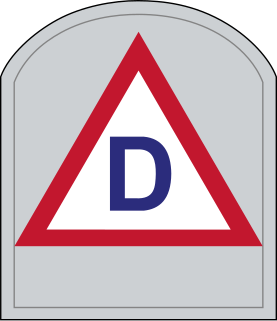 W
WThe 39th Infantry Division was an infantry formation of the Army National Guard, originally formed as the 18th Division in 1917. The division consisted of troops from Arkansas, Louisiana, and Mississippi. After training at Camp Beauregard, Louisiana, the division was deployed to France but did not see combat before the end of World War I. In July 1923 the division was re-designated as the 31st Infantry Division. The 39th Infantry Division was reactivated after World War II with troops from Louisiana and Arkansas and its headquarters in Louisiana. In 1967, the 39th Infantry Division was reorganized to become the 39th Infantry Brigade (Separate). Its headquarters was in Little Rock, Arkansas and the unit consisted entirely of troops from the Arkansas Army National Guard.
 W
WThe 40th Armored Division was a division of the United States Army National Guard from July 1954 until 1967.
 W
WThe 43rd (Wessex) Infantry Division was an infantry division of Britain's Territorial Army (TA). The division was first formed in 1908, as the Wessex Division. During the First World War, it was broken-up and never served as a complete formation. It was reformed in the TA in 1920, and then served in the campaign in North West Europe from June 1944 until May 1945, during the Second World War. The division suffered heavy casualties and gained an excellent reputation. The Germans referred to division as the Yellow Devils. After the Second World War, the division formed part of the postwar TA, and became the 43rd (Wessex) Division/District in 1961. It was finally disbanded in 1967.
 W
WThe Middlesex Yeomanry was a volunteer cavalry regiment of the British Army originally raised in 1797. It saw mounted and dismounted action in the Second Boer War and in World War I at Gallipoli, Salonika and in Palestine, where one of its officers won a Victoria Cross at the Battle of Buqqar Ridge and the regiment rode into Damascus with 'Lawrence of Arabia'. Between the world wars the regiment was converted to the signals role and it provided communications for armoured formations in World War II, including service in minor operations in Iraq, Palestine, Syria and Iran, as well as the Western Desert, Italian and North-West European campaigns. It continued in the postwar Territorial Army and its lineage is maintained today by 31 Signal Squadron, Royal Corps of Signals, which forms part of the Army Reserve.
 W
WThe 49th Infantry Division was an infantry division of the British Army. The division fought in the First World War in the trenches of the Western Front, in the fields of France and Flanders. During the Second World War, the division fought in the Norwegian Campaign and in North-western Europe. After the Second World War, it was disbanded in 1946, then reformed in 1947. It remained with Northern Command until finally disbanded in 1967.
 W
W50 (Northumbrian) Signal Regiment was a Territorial Army (TA) unit of the British Army's Royal Corps of Signals. It had its origins in a signal company and a cyclist battalion formed in 1908 and it provided the divisional signals for the 50th (Northumbrian) Division and its duplicates during World War II. Its successors continued in the postwar TA until 2009.
 W
WThe 1st Middlesex Engineers was the senior engineer unit of Britain's Volunteer Force, raised in 1860 and originally recruited from the South Kensington Museum. It provided Royal Engineers (RE) units to the 47th Division, the 47th (London) Infantry Division, the 56th (London) Divisions, and the 60th Division during both World Wars. The engineers served on the First World War's Western Front from 1915 to 1918, and in a number of theatres during the Second World War. It also served in the postwar Territorial Army, until 1967.
 W
WThe 115th Field Regiment was a part-time unit of Britain's Royal Artillery (RA), raised as part of the Territorial Army (TA) just before the outbreak of World War II. It served in the Battle of France and the Burma Campaign, and in the postwar TA.
 W
W140 Corps Engineer Regiment was a short-lived Territorial Army (TA) unit of the Royal Engineers based in the North Midlands of England during the 1960s.
 W
WThe 146th Infantry Brigade was an infantry brigade formation of the British Army, part of the Territorial Force with the 49th Infantry Division. The brigade saw active service during both the First and the Second World Wars, and during the early part of the Cold War. The brigade was active from 1908 until 1967 when it was finally disbanded. The brigade was reformed in 1983, though with a much smaller and insignificant role before finally disbanding again in 1993.
 W
WThe Suffolk Fortress Royal Engineers was a coast defence unit of Britain's Territorial Army formed in the 1930s. During World War II it changed roles and specialised in bridgebuilding and rafting to help 21st Army Group cross the numerous water obstacles encountered during the campaign in North West Europe. It continued in the post-war TA until 1967.
 W
WThe 8th London (Howitzer) Brigade, Royal Field Artillery was a new unit formed when Britain's Territorial Force was created in 1908. Its origin lay in Artillery Volunteer Corps formed in the 1860s in Plumstead, Kent, later incorporated into London. Together with its wartime duplicate the brigade served during the First World War on the Western Front, at Salonika and in Palestine where it was the first British unit to enter Jerusalem. It again formed two units for service in the Second World War, one of which saw extensive action in France, North Africa, and Italy, while its duplicate was captured at the Fall of Singapore. Its successor unit continues in the Army Reserve today.
 W
WThe Royal Devon Yeomanry was a Yeomanry regiment of the British Army, formed in 1920. It participated in the Second World War and now forms a squadron of the Royal Wessex Yeomanry.
 W
WThe 17th Battalion, The London Regiment , was a unit of Britain's Territorial Force formed in 1908 from Volunteer corps dating back to 1859. It saw considerable service on the Western Front, at Salonika and in Palestine during World War I. It served as an infantry regiment during World War II before conversion to an artillery unit in 1947 and subsequent amalgamation in 1967.
 W
WThe Middlesex Yeomanry was a volunteer cavalry regiment of the British Army originally raised in 1797. It saw mounted and dismounted action in the Second Boer War and in World War I at Gallipoli, Salonika and in Palestine, where one of its officers won a Victoria Cross at the Battle of Buqqar Ridge and the regiment rode into Damascus with 'Lawrence of Arabia'. Between the world wars the regiment was converted to the signals role and it provided communications for armoured formations in World War II, including service in minor operations in Iraq, Palestine, Syria and Iran, as well as the Western Desert, Italian and North-West European campaigns. It continued in the postwar Territorial Army and its lineage is maintained today by 31 Signal Squadron, Royal Corps of Signals, which forms part of the Army Reserve.
 W
WThe Middlesex Yeomanry was a volunteer cavalry regiment of the British Army originally raised in 1797. It saw mounted and dismounted action in the Second Boer War and in World War I at Gallipoli, Salonika and in Palestine, where one of its officers won a Victoria Cross at the Battle of Buqqar Ridge and the regiment rode into Damascus with 'Lawrence of Arabia'. Between the world wars the regiment was converted to the signals role and it provided communications for armoured formations in World War II, including service in minor operations in Iraq, Palestine, Syria and Iran, as well as the Western Desert, Italian and North-West European campaigns. It continued in the postwar Territorial Army and its lineage is maintained today by 31 Signal Squadron, Royal Corps of Signals, which forms part of the Army Reserve.
 W
WThe Essex Yeomanry was a Reserve unit of the British Army that originated in 1797 as local Yeomanry Cavalry Troops in Essex. Reformed after the experience gained in the Second Boer War, it saw active service as cavalry in World War I and as artillery in World War II. Its lineage is maintained by 36 Signal Squadron, part of 71 (Yeomanry) Signal Regiment, Royal Corps of Signals.
 W
WThe Middlesex Yeomanry was a volunteer cavalry regiment of the British Army originally raised in 1797. It saw mounted and dismounted action in the Second Boer War and in World War I at Gallipoli, Salonika and in Palestine, where one of its officers won a Victoria Cross at the Battle of Buqqar Ridge and the regiment rode into Damascus with 'Lawrence of Arabia'. Between the world wars the regiment was converted to the signals role and it provided communications for armoured formations in World War II, including service in minor operations in Iraq, Palestine, Syria and Iran, as well as the Western Desert, Italian and North-West European campaigns. It continued in the postwar Territorial Army and its lineage is maintained today by 31 Signal Squadron, Royal Corps of Signals, which forms part of the Army Reserve.
 W
WThe City of London Signals was a Territorial Army unit of the British Army's Royal Corps of Signals. It had its origins in a signal company of the Royal Engineers formed in 1908 and during World War II it provided the divisional signals for the 56th (London) Division and its duplicates as well as communications for the Royal Air Force in the Middle East. Its successors continued in the postwar Territorial Army and Army Reserve until 2016.
 W
WThe 4th Lancashire Artillery Volunteers, later renamed to the 4th West Lancashire Brigade, known as 'The Old 4th', was a part-time unit of the British Army's Royal Artillery founded in Liverpool in 1859. It served on the Western Front during World War I, one of its members winning the Victoria Cross at Cambrai. Between the world wars the unit pioneered mechanical traction methods. During World War II it formed three regiments that saw action at Dunkirk, in East Africa, on Crete, at Tobruk, in Burma, and in the final campaigns in Italy and North West Europe. It continued in the post-war Territorial Army until 1973.
 W
WThe 1st Cornwall Artillery Volunteers were formed in 1860 as a response to a French invasion threat. They served as a Coast Artillery unit during both World Wars, and also manned batteries serving overseas. The unit continued in existence until the dissolution of Coast Artillery in the UK in 1956.
 W
WThe East Riding Royal Garrison Artillery (ERRGA) was a part-time unit of Britain's Royal Artillery based at Hull in the East Riding of Yorkshire. It provided coastal defence artillery along the Humber Estuary from 1908 to 1956, manned siege batteries on the Western Front during World War I at the Somme and Ypres and played a role in the pursuit of the German army during the Hundred Days Offensive. It served as infantry in Allied-occupied Germany after World War II. Its successor units in the Territorial Army included anti-aircraft artillery and field engineers.
 W
WThe 4th North Midland Brigade, sometimes known as the 'Derbyshire Howitzers', was a part-time unit of Britain's Royal Field Artillery created in 1908 as part of the Territorial Force. It served on the Western Front in World War I. Reorganised between the wars, it was later converted to the anti-aircraft (AA) role. During World War II, part of the regiment served in the Siege of Malta but the rest was captured at the Fall of Tobruk. The reconstituted regiment served on in Anti-Aircraft Command until 1955 and as a unit of the Royal Engineers until 1967.
 W
W73rd Heavy Anti-Aircraft Regiment, Royal Artillery was a West Midlands-based volunteer air defence unit of Britain's Territorial Army (TA) raised in 1937. During World War II, it served in the Battle of France, The Blitz, Egypt, Sicily and Italy. Postwar, its successor regiments continued to serve until 1967, and a battery descended from the regiment forms part of today's Army Reserve
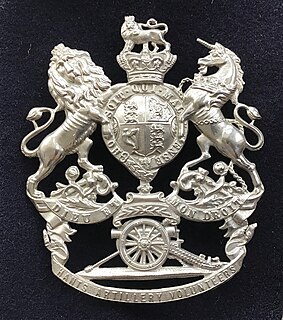 W
WThe 1st Wessex Artillery was a volunteer unit of the British Army that existed under various titles from 1860 to 1971, including active service in Mesopotamia in World War I and North Africa and Italy in World War II.
 W
WThe 208th (Sussex) Field Company was a Territorial Army (TA) unit of Britain's Royal Engineers (RE) raised in Eastbourne in 1920. It formed part of 44th Division, but shortly after the outbreak of war in 1939 it joined 2nd Division of the Regular Army and served with that formation throughout the Second World War. It was in the Battle of France and the Dunkirk evacuation. Later it was sent to Burma where it was involved in the decisive Battle of Kohima and the assault crossing of the Irrawaddy. The unit was reformed in the postwar TA and continued until 1967.
 W
WThe Lovat Scouts was a British Army unit first formed during the Second Boer War as a Scottish Highland yeomanry regiment of the British Army. They were the first known military unit to wear a ghillie suit and in 1916 formally became the British Army's first sniper unit, then known as "sharpshooters". It served in the First World War and the Second World War and today forms A Company within the 2nd Battalion, 51st Highland Volunteers.
 W
WThe 1st Middlesex Engineers was the senior engineer unit of Britain's Volunteer Force, raised in 1860 and originally recruited from the South Kensington Museum. It provided Royal Engineers (RE) units to the 47th Division, the 47th (London) Infantry Division, the 56th (London) Divisions, and the 60th Division during both World Wars. The engineers served on the First World War's Western Front from 1915 to 1918, and in a number of theatres during the Second World War. It also served in the postwar Territorial Army, until 1967.
 W
WThe 1st Hampshire Artillery Volunteers and its successors were part-time coast defence units of the British Army from 1860 to 1967. Although the units saw no action, they protected the Portsmouth area in both World Wars and supplied trained gunners to siege batteries engaged on the Western Front during World War I. The unit continued in the Territorial Army after World War II.
 W
WThe 4504th Missile Training Wing is an inactive United States Air Force unit. It was last assigned to Ninth Air Force, Tactical Air Command, stationed at Orlando Air Force Base, Florida. It was inactivated on 25 March 1967.
 W
WThe Aultbea Station, also known as the Loch Ewe and Aultbea Station, was a naval station of the British Royal Navy. Its headquarters were in Aultbea, Scotland. The station was commanded by the Senior Naval Officer, Aultbea and was in operation from 1915 to 1919 and again from 1940 to 1967.
 W
WThe Band of the Royal Regiment of Fusiliers is an Army Reserve military band part of the 5th Battalion, Royal Regiment of Fusiliers.
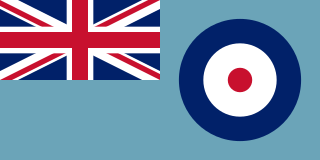 W
WThe former Royal Air Force Station Butzweilerhof, commonly known as RAF Butzweilerhof was a Royal Air Force station/airfield in the middle west of Germany situated in the northern suburbs of Cologne. The station’s motto was Per Vires Pax, and the station badge depicts the Cologne cathedral rising above the waters.
 W
WThe Commander-in-Chief South Atlantic was an operational commander of the Royal Navy from 1939. The South American area was added to his responsibilities in 1960, and the post disestablished in 1967.
 W
WRoyal Air Force Hemswell or more simply RAF Hemswell is a former Royal Air Force station located 7.8 miles (12.6 km) east of Gainsborough, Lincolnshire, England.
 W
WThe Home Fleet was a fleet of the Royal Navy that operated from the United Kingdom's territorial waters from 1902 with intervals until 1967.
 W
WThe British Mediterranean Fleet, also known as the Mediterranean Station, was a formation of the Royal Navy. The Fleet was one of the most prestigious commands in the navy for the majority of its history, defending the vital sea link between the United Kingdom and the majority of the British Empire in the Eastern Hemisphere. The first Commander-in-Chief for the Mediterranean Fleet was the appointment of General at Sea Robert Blake in September 1654. The Fleet was in existence until 1967.
 W
WThe Monmouthshire Regiment was an infantry regiment of the British Army and the Territorial Army. Originating in units of rifle volunteers formed in Monmouthshire in 1859, the regiment served in the Second Anglo-Boer War and both World War I and World War II before losing its separate identity in 1967.
 W
WNo. 38 Squadron of the Royal Air Force was a bomber squadron formed in 1916 and was disbanded most recently in 1967.
 W
WThe North Somerset Yeomanry was a part-time cavalry regiment of the British Army from 1798 to 1967. It maintained order in Somerset in the days before organised police forces, and supplied volunteers to fight in the Second Boer War. It served on the Western Front in the First World War. At the outbreak of the Second World War, it continued to operate in the mounted role and then as a specialist signals unit. Postwar it joined the Royal Armoured Corps and later became infantry. Its lineage today is maintained by 93 Squadron 39 (Skinners) Signal Regiment.
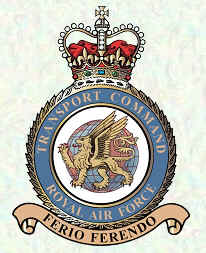 W
WRAF Transport Command was a Royal Air Force command that controlled all transport aircraft of the RAF. It was established on 25 March 1943 by the renaming of the RAF Ferry Command, and was subsequently renamed RAF Air Support Command in 1967.
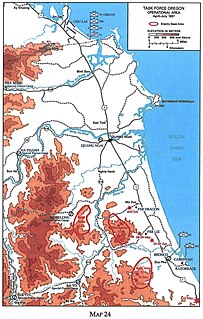 W
WTask Force Oregon, was a United States Army division-sized unit composed of 3 separate infantry brigades, active in Quảng Ngãi and Quảng Tín Provinces, South Vietnam from April to September 1967 when it was redesignated the 23rd Infantry Division (Americal).
 W
WThe Trade and Operations Division (T.O.D.) was a division of the Admiralty Naval Staff created in 1961 following the merger of two former naval staff divisions one for Trade and the other for Operations. The staff division was administered by the Director, Trade and Operations Division. It existed until 1967.